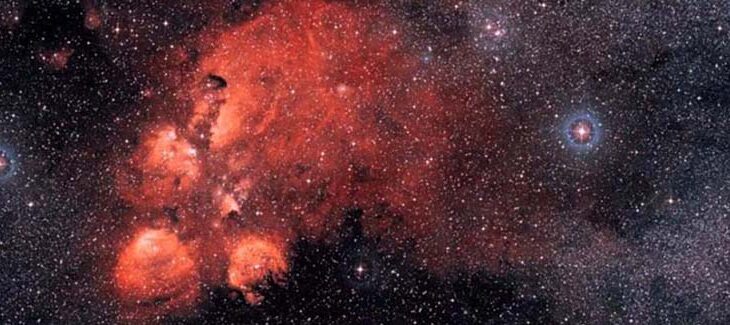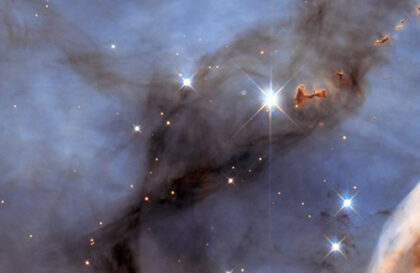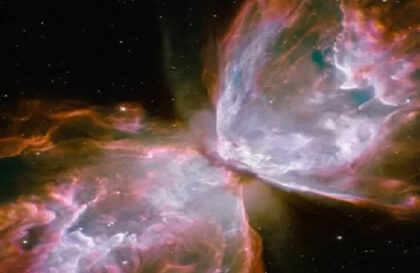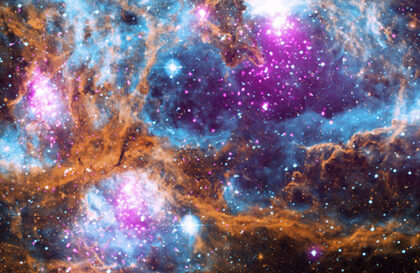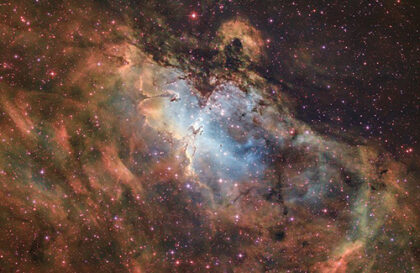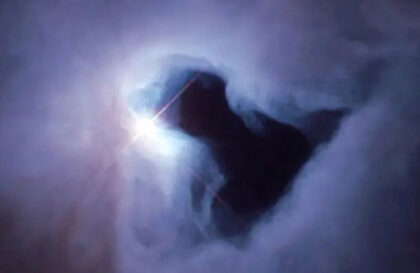The Cat’s Paw Nebula (NGC 6334, Bear Claw Nebula, or Gum 64) is a vast region where new stars form. This recent portrait of NGC 6334 was compiled from images taken by the Wide Field Imager on the MPG/ESO 2.2-meter telescope at La Silla Observatory in Chile. This image was created using blue, green, and red data.
The nebula appears red because blue and green light is more strongly scattered and absorbed by the material between the nebula and Earth. The red light comes primarily from hydrogen gas, which glows under the intense radiation from hot young stars.
NGC 6334 is located approximately 5,500 light-years from Earth in the constellation Scorpius. The total diameter of the entire gas cloud is about 50 light years.
This nebula is considered one of the most active clusters of massive stars in the Milky Way and has attracted the attention of astronomers. It harbors newly formed brilliant blue stars, each ten times more massive than the Sun, and was created just a few million years ago. The region is also home to many young stars buried in deep dust clouds, making studying difficult. There may be thousands of stars inside the Cat’s Paw Nebula.
The Cat’s Paw Nebula, imaged here by NASA’s Spitzer Space Telescope using the MIPS and IRAC instruments, is a star-forming region that lies inside the Milky Way galaxy. New stars may heat up the surrounding gas, which can expand to form “bubbles.” Credit: NASA/JPL-Caltech
The black filaments running horizontally through the nebula are regions of gas and dust so dense that not even infrared light can pass through them. These dense regions could soon become the sites for forming a new generation of stars.
The Cat’s Paw star-forming region is estimated to be 24 to 27 parsecs (80 to 90 light years) in diameter.
Spitzer is an infrared telescope, and infrared light is useful to astronomers because it can penetrate thick clouds of gas and dust better than optical light (visible to the human eye).
Banner image: ESO
Image credit:
https://www.eso.org
https://www.caltech.edu
